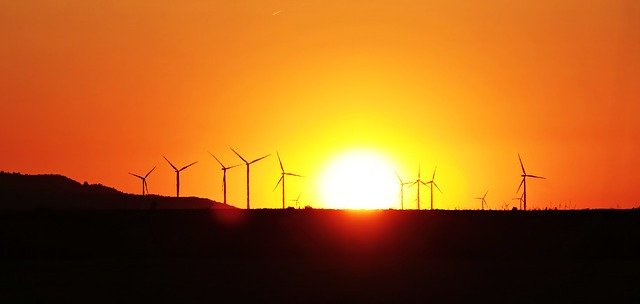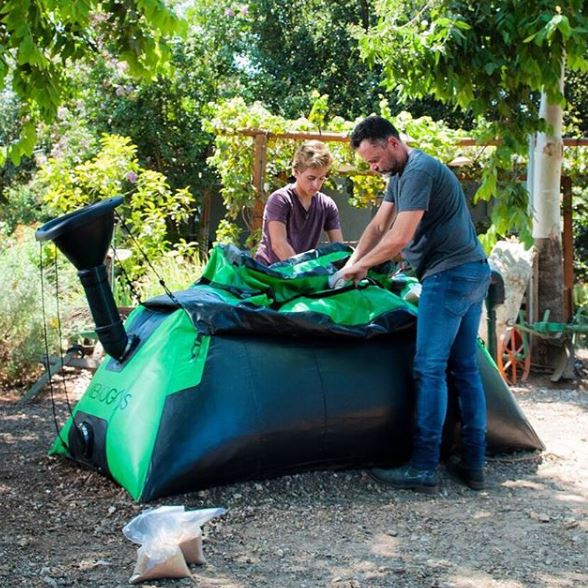The Middle East has huge potential when it comes to renewable energy. Due to the all-year-long sunshine, and flat planes, it is a suitable area for solar and wind farms. This potential must be used! Because of that fact, many companies who are in the clean energy business choose to move to Kuwait. Opportunities are endless, and everyone should start embracing renewable energy in Kuwait.
Let’s research this topic a bit more, to discover the true potential and possibilities!
Types of renewable energy sources
In order to better understand the nature of renewable energy sources in Kuwait, it is crucial to learn a bit more about its types. Today, there are seven major renewable energy sources:
- Solar power – Solar energy is produced by exploiting the radiant energy of the Sun. Sunlight converts into heat, hot water, or electricity. That is achieved through the help of solar cells and the PV system.
- Wind power – Wind energy is produced at wind farms, using turbines. There are 3 types of systems used for the production of wind power: Single wind turbines, commercial-grade systems, and utility-scale wind farms.
- single wind turbines are most useful for pre-existing energy organisations.
- commercial-grade systems are used to power multiple organisations
- utility-scale wind farms are for those who want to purchase on a wholesale or a contract.
- Hydroelectric power – When it comes to hydroelectric energy, the most known form is a dam. The water running through the turbines is converted to electric energy.
- Oceans – Oceans are massive sources of energy. When it comes to oceans, they can generate thermal and mechanical renewable energy. Thermal energy comes from the warm water surface, while mechanical energy develops due to the flow of the tide.
- Geothermal sources – Geothermal energy comes in the form of heat trapped beneath the earth’s crust. You can see these sources in nature, they are called volcanoes and geysers. The way geothermal energy is used is through the steam that is generated at the source.
- Biomass – Biomass is a matter that comes from plants or organisms that died. When it is processed, it creates bio energy. A very familiar example is using wood to start a fire. So, bio energy can be created either by burning biomass, or harvesting methane when organic materials decompose.
- Hydrogen power – Opposite to other sources, hydrogen must be combined with other elements to produce results. It can be used both for fuel and electric energy.
Kuwait is a fertile ground for solar and wind farms. There lies huge potential, waiting to be exploited. Not only it can be used for business purposes, but also in projects that include self-sustaining homes.

Kuwait is a fantastic area for solar and wind farms, and people must begin to embrace renewable energy in Kuwait
Embracing Renewable Energy in Kuwait
Even though such potential exists, not much is done on the matter of renewable energy in Kuwait. While I do think that raising awareness about renewable energy is the best strategy, there is more to the story. Long term goals for 2030 announce that Kuwait will produce 15% of electric energy thanks to renewable sources. However, current numbers are lower than 1%.
With such potential and conditions, one might wonder why is that.
It’s all about the oil
Let’s face it, Kuwait currently runs on burning fuel oil and imported gas. The volume of oil reserves is massive, and they export around 2m barrels per day. Furthermore, there are plenty of unexploited resources waiting in the background. With such a strong economy, the numbers are looking good. The production cost is also lowered, thanks to demand. Currently, it is just not that important to shift the focus toward renewable energy in Kuwait.
Nevertheless, there is a word of caution in this tale. As with everything else on our planet, oil and gas reserves are limited. That is something that must be taken into consideration. Embracing renewable energy in Kuwait is the strategy for the future! There are plenty of benefits of renewable energy, and that is an opportunity that must not be missed.
Important numbers to look at
Let’s talk a little bit about the situation with renewable energy around the world. Due to the potential benefits, all major countries are trying their best to improve in this area. Due to the demand, the production cost for solar power dropped by a whopping 90%! Even better, it is still declining, and it will continue to do so as long as possible.
On another note, the demand for electricity in Kuwait is becoming larger and larger on a daily basis. Due to the rising population and increased consumption of electric energy, it is essential to look for new, renewable energy sources.
Not only that the renewable energy could help Kuwait on a grand scale, but it would also power neighbouring countries. The potential is big, and the production cost is low.
Moving your business to Kuwait
Thanks to the potential of the market, a lot of companies are choosing to move their offices to Kuwait. Especially those companies that are in the renewable energy business. Since the awareness is still low, whoever uses the chance has the possibility of becoming a pioneer and tightly grab the opportunities on the market.
If you are thinking about moving your offices, you should know that transporting office supplies to your new address is now easier than ever. It is important not to lose any time, the sooner you start with the process, the better.
The future of renewable energy in Kuwait
With all that has been said, I can say that Kuwait has a bright future when it comes to renewable energy. However, it is crucial to raise awareness. Kuwait Institute for Scientific Research is working on many future projects. One worth mentioning is the development of solar plants, located at Shagaya Renewable Energy Park. Nevertheless, it is crucial to raise awareness among people, and help them embrace renewable energy in Kuwait. Nothing is possible without the demand!
This article was kindly written and contributed by Sally Norton.


 e independence. It is self-generated and as such helps people become independent from the coal-powered energy. By installing solar panels on your home or business, you instantly reduce your dependence on electricity and all the fees that come with it. Moreover, any solar energy that you generated but did not use, is sent back to the utility company. You can also install batteries and become even more independent as they will collect and store all the solar energy which you can use later on when your power usage overtakes what your solar panels are generating. By doing this, we are helping
e independence. It is self-generated and as such helps people become independent from the coal-powered energy. By installing solar panels on your home or business, you instantly reduce your dependence on electricity and all the fees that come with it. Moreover, any solar energy that you generated but did not use, is sent back to the utility company. You can also install batteries and become even more independent as they will collect and store all the solar energy which you can use later on when your power usage overtakes what your solar panels are generating. By doing this, we are helping

